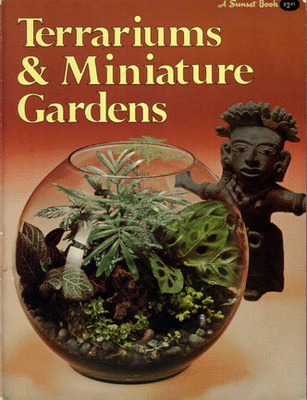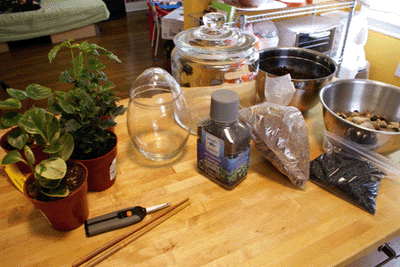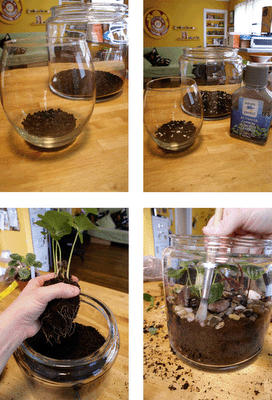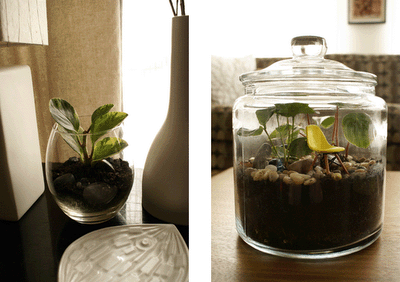|
|
|
Project: Terrarium
|
|
It's too damn hot outside, so I'm staying inside to tackle that classic indoor garden home accessory- the terrarium. Terrariums date back to Victorian times when explorers would bring back exotic plants and needed somewhere hot and humid to keep them alive. The terrariums I remember best were the ones from my youth- they were as ubiquitous in the 70s as the dreaded macrame wall hanging. It's not too hard to take something like the terrarium and put a modern twist on it since plants never go out of fashion, but the containers people used in the 70s (remember the brandy snifter? the giant water jug?) seem a little dated now.
|
Okay, confession time. I love plants and I try my best not to kill them, but it happens occasionally. There are several plants in my house that I've had for a while and are doing great, but all of the plants that I've attempted to keep in non-draining planters have died. I've tried to make a terrarium before and it was a total disaster. I don't like being a plant killer, but since I actually referred to proper terrarium-making instructions this time, I'm hoping that this experiement in container gardening won't yield such sad results.
What you'll need:
- 1 container for you terrarium
- Drainage material (small gravel works well)
- Charcoal pellets
- Potting soil
- Plants (ask the kind folks at your local nursery for the best plants to use in a terrarium)
- A variety of tools to help insert plants into jars and into soil (your hands work well too)
I received my terrarium-making instruction from the 1975 edition of Sunset's Terrariums and Indoor Gardens and here's what they say to do:
Step one: Rinse, drain and let your container dry overnight.
Step two: Add a layer of drainage material (I used black aquarium gravel), a layer of charcoal to keep the soil "sweet" and then add potting soil.
Step three: Carefully remove the plants from their containers, shake off excess dirt, gently compress the root ball into a cone shape and insert into the potting soil, adding more soil around the plant as needed.
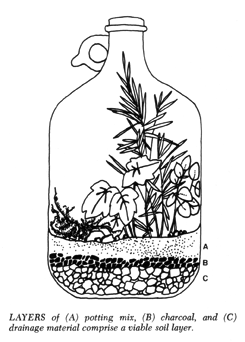
|
Sounds easy, but arranging all the plants proved to be tricky and I admit it's something that needs a lot of patience, practice and better tools than my fat fingers, a spoon and a chopstick (but they did the job anyway).
I made two terrariums- one closed and one open. The contained terrarium has already started to form condensation on the sides of the jar, which tells me that it's working. In theory, it's in the process of forming its own rain cycle and the terrarium will never need watering. The one without a lid will need light watering occasionally. I hope the drainage material will do its job and keep the roots in both containers from rotting. I was also very careful to make sure that the plants in the contained terrarium did not touch the sides of the container, because I read that the leaves could rot. We'll see how well they fare.
|
|
I really hate embarking on a project that I think is doomed to fail. To cheer myself up, I keep putting little things in the terrariums for my own amusement. Silly, silly me.
|
|
Poopscape is written by Claire Chauvin, a craft-obsessed mother and photography teacher living in Houston, Texas. If you have a question or a compliment, have tried one of my projects and want to share with me, or just want to chat, please email me at claireATpoopscape.com.
|




